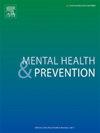Systematic review of outcome measures used in evaluation of school-based mental health interventions
IF 2.4
Q2 Medicine
引用次数: 0
Abstract
Aims
The past decade has seen an increase in policy initiatives and school-based interventions aimed at improving children's mental health. However, to know if an intervention or policy is making an impact, to support data comparisons across interventions, and to enable schools to track student mental health, we need to identify instrument(s) that can detect change. This study seeks to identify instruments that have been shown to detect change in child mental health when implemented universally in schools.
Methods
We conducted a systematic review of instruments measuring mental health symptoms or skills in randomised controlled trials of schools-based universal mental health interventions in primary (elementary) schools published between 2012 and 2023 in English. The aim was to synthesise evidence on instruments’ ability to detect change. Risk of bias assessment was conducted using the RoB-2 tool.
Results
Forty-two instruments were identified across the 39 included studies and captured a range of dimensions of mental health. Only one study was found to be at low risk of bias, 27 studies were at some risk of bias, and 11 studies were at high risk of bias. Nine instruments were used in more than one study. The teacher-reported Strengths and Difficulties Questionnaire (SDQ) was the most commonly used instrument and showed statistical evidence of its ability to detect change arising from interventions addressing children's mental health.
Conclusions
The teacher-reported SDQ shows promise as an instrument that could be used universally in primary schools to evaluate interventions and monitor changes in child mental health.
对校本心理健康干预措施评价结果指标的系统评价
在过去十年中,旨在改善儿童心理健康的政策举措和以学校为基础的干预措施有所增加。然而,要了解干预措施或政策是否产生影响,支持跨干预措施的数据比较,并使学校能够跟踪学生的心理健康,我们需要确定能够检测变化的工具。本研究旨在确定在学校普遍实施时已被证明可以检测儿童心理健康变化的工具。方法:我们对2012年至2023年间发表的以学校为基础的小学普遍心理健康干预措施的随机对照试验中测量心理健康症状或技能的工具进行了系统回顾。其目的是综合有关仪器探测变化能力的证据。使用rob2工具进行偏倚风险评估。结果在39项纳入的研究中确定了42种工具,并捕获了心理健康的一系列维度。只有1项研究存在低偏倚风险,27项研究存在一定偏倚风险,11项研究存在高偏倚风险。在不止一项研究中使用了九种仪器。教师报告的优势和困难问卷(SDQ)是最常用的工具,并有统计证据表明,它能够发现针对儿童心理健康的干预措施所产生的变化。结论教师报告的SDQ是一种可以在小学普遍使用的评估干预措施和监测儿童心理健康变化的工具。
本文章由计算机程序翻译,如有差异,请以英文原文为准。
求助全文
约1分钟内获得全文
求助全文
来源期刊

Mental Health and Prevention
Medicine-Psychiatry and Mental Health
CiteScore
2.10
自引率
0.00%
发文量
22
审稿时长
24 days
 求助内容:
求助内容: 应助结果提醒方式:
应助结果提醒方式:


